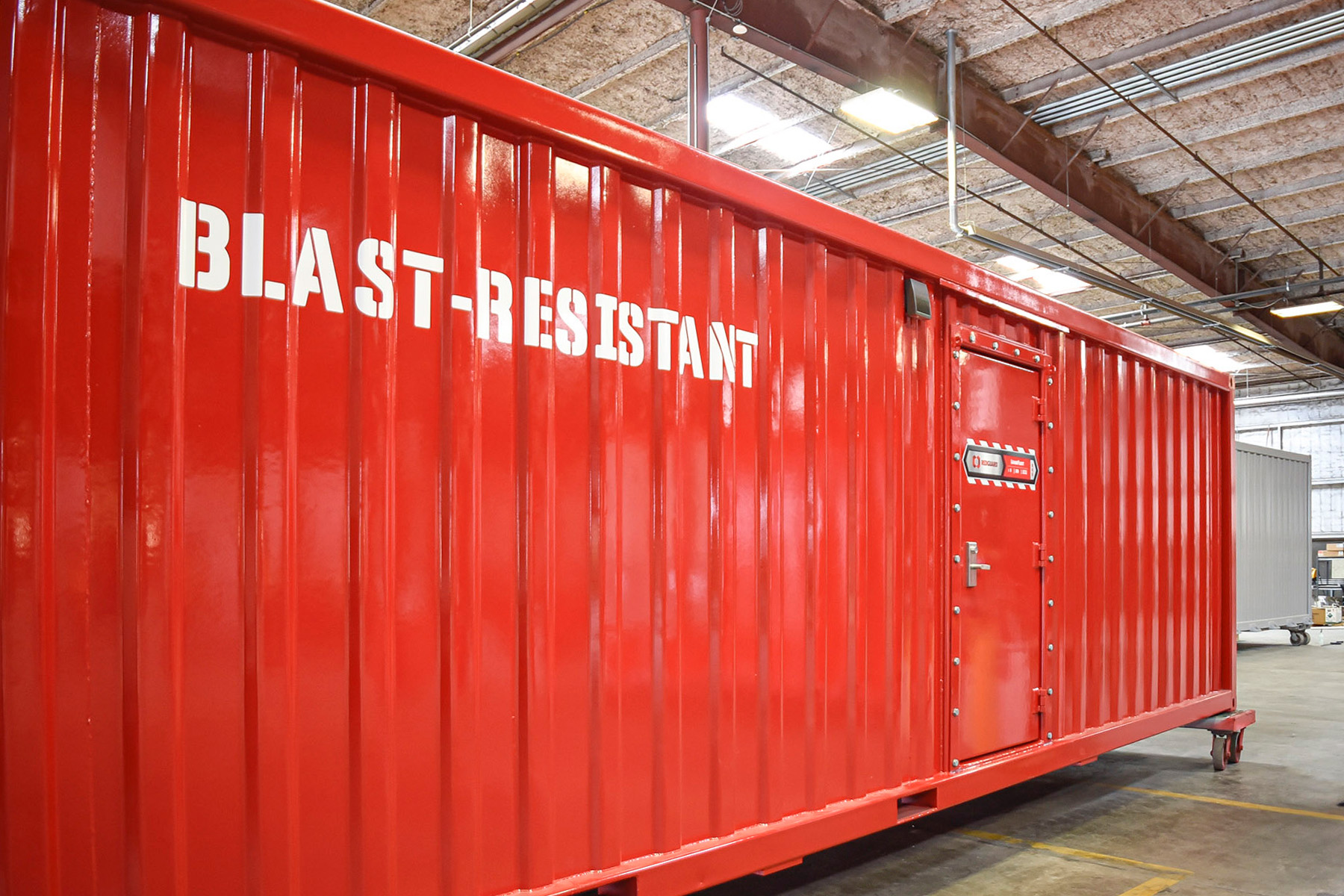Safety & Regulations | Best Practices | Design & Engineering
Blast-Rated Doors and How They Protect Your Team


This content originally published here on the RedGuard blog in May 2025, and then edited for length and style for the July 2025 issue of BIC Magazine. It's presented here in its original unedited format.
In any blast-resistant building, the door plays a critical role in saving lives. The door is an access point, but it’s also part of the building’s protective envelope. A blast-rated door should be designed to hold the line when high-pressure forces threaten structural integrity. If a door fails during a blast event, it can compromise the entire building and the lives of the building’s occupants. That’s why blast-rated doors are engineered to the same rigorous standards as the walls and windows that surround them.
Blast-rated doors are usually constructed using thick steel and come with features designed to withstand a high level of pounds per square inch (psi) associated with blast events. Blast-rated doors are categorized based on the psi they can withstand.
Importance of Blast-Rated Doors
Blast-rated doors provide essential protection for staff and visitors in buildings at risk of terrorist attacks or factory facilities that manufacture or handle dangerous chemicals. In addition to saving lives, they also reduce an organization’s liability in the event of injury or loss of life.
Blast-resistant buildings, like those from RedGuard, rely on a Single Degree of Freedom (SDOF) system. The degree of freedom refers to the number of parameters that define the state of a physical system, meaning that the system itself is only as strong as its weakest component. For a blast-rated door to be effective, it must be as protective as the building itself.
Weight, Material and Maintenance of Blast-rated Doors
The materials used to construct blast-rated doors depend on the resistance level and protection needed. There are certainly blast-rated doors constructed of concrete, aluminum, and timber, but for high blast-resistance, steel is the best material for the following reasons:
- Steel can withstand a high level of pressure waves.
- Steel is fire-resistant. It has a low heat transfer rate and a high melting point.
- It withstands expansion better than most materials. Steel bends and absorbs pressure, thus minimizing hazards and extending durability.
- Steel has a much higher tensile strength when compared to aluminum, concrete, and timber.
A blast door's weight depends on the building specifications, but the mean weight is about 450 pounds. Those used in high-traffic areas like permit offices can weigh up to 600 pounds and may be operated over 1,000 times in a 12-hour shift. It should be noted that increased usage necessitates more frequent maintenance checks. That kind of wear adds up quickly, so regular inspections are key to ensuring long-term performance.
A lot of research and engineering goes into the design of blast-rated doors, and they must be used as intended by the manufacturer to ensure their effectiveness.
One of the most important safety practices is to keep the door closed. Blast-rated doors are more than four times heavier than regular doors. This feature makes it tempting to leave them open or propped open for easier entry and exit. Unfortunately, propping the door open negates the benefits of having the door in the first place. An open door allows the blast force to enter the building instead of passing over it.
When a blast door is left open, its own weight makes it susceptible to sagging. Loose hinges or latches can cause misalignment so that the door no longer fits in the frame. The hydraulic system that prevents the door from slamming and makes it easier to open and shut should be checked regularly to ensure it is in perfect working order. You should schedule regular maintenance of blast-rated doors between every thirty and sixty days, based on the advice from a qualified technician upon building install. The manufacturer's agent or a qualified technician should conduct the maintenance.
A regular maintenance schedule helps prevent small issues from becoming serious safety risks. The maintenance check should include:
- A visual check for door sagging, misalignment, or light leaks around the frame.
- Ensure the door opens and closes smoothly without unusual noises.
- Inspect the hardware. Do the hinges, latches, and handles appear worn or have damage?
- A check of the hydraulic arm, to be sure it operates correctly and that fluid levels are adequate.
- Application of appropriate lubricants to moving parts to prevent corrosion and ensure smooth operation.
Blast-rated doors are more than a structural component of a blast-resistant building, they’re a frontline defense in environments where every second counts. Their performance during a blast event depends on their construction and on how well they’re maintained. When you work with a partner like Redguard, we ensure your protection with every detail, including the doors.
With years of experience in the design, manufacturing, and deployment of blast-resistant buildings, RedGuard understands the complex needs of high-risk facilities. We’ve delivered thousands of safe structures to the oil and gas, chemical, and defense sectors—each designed with the same attention to detail and rigorous safety standards.
For more information about blast-rated doors, or the other components that make up a blast-resistant building, contact one of our knowledgeable representatives, or check out our definitive guide to blast resistant buildings.
RedGuard Sales & Marketing
The RedGuard sales and marketing team curates and writes on a variety of topics regarding blast-resistance and modular buildings. To inquire about any of the topics you read about on our blog, connect with us.

